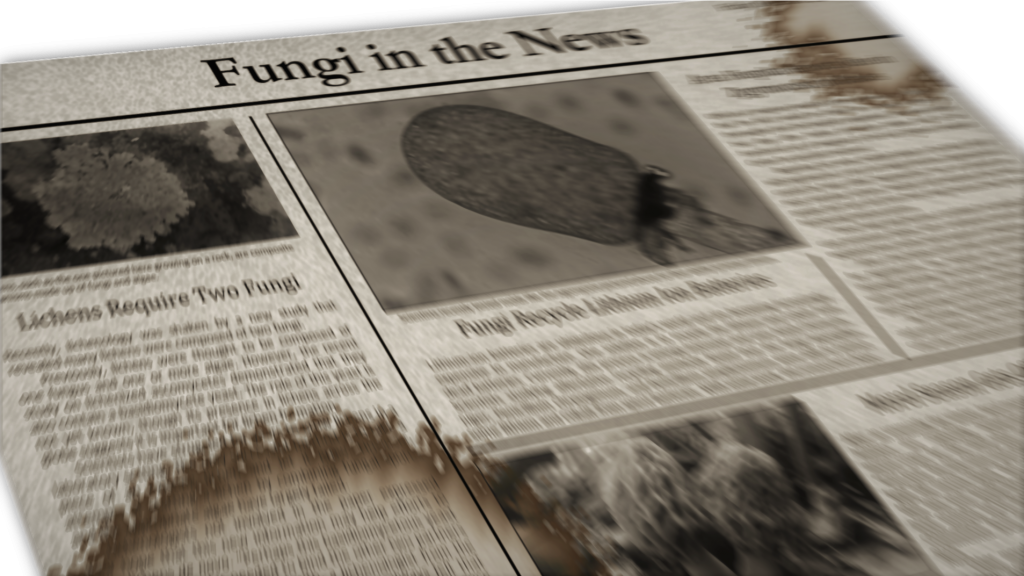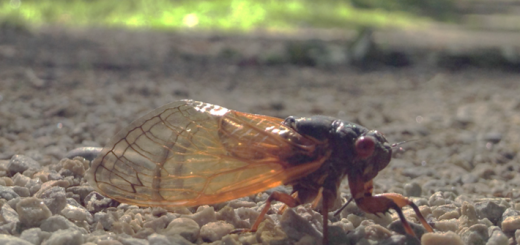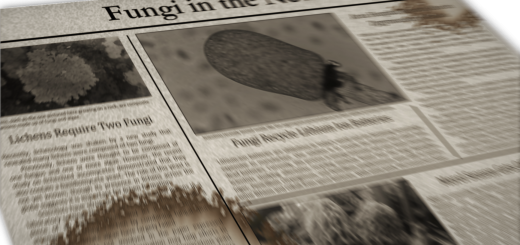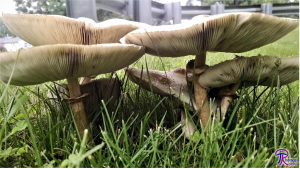Winter 2018 Fungal News Update
 Fungi appear in the news with surprising frequency. However, many of those stories do not provide any new information. Below is a summary of what we’ve learned about fungi from November 2017 through Early February 2018. Read below to learn about: zombie ants, aflatoxin control, white nose syndrome solutions, using fungi in concrete, and more! Visit the associated links to get the full story.
Fungi appear in the news with surprising frequency. However, many of those stories do not provide any new information. Below is a summary of what we’ve learned about fungi from November 2017 through Early February 2018. Read below to learn about: zombie ants, aflatoxin control, white nose syndrome solutions, using fungi in concrete, and more! Visit the associated links to get the full story.
With the growing concern over untrustworthy news sources and the media’s tendency to inaccurately report scientific studies, can these sources be trusted? Yes they can, with a bit of caution. I have checked to make sure all the articles based on scientific papers draw from peer-reviewed journals and that they accurately reflect the content of the papers. For articles not linked to scientific papers, I try to stick to sources with a good track record in reporting on science or to local sources for region-specific information. However, I encourage you to do your own research and decide for yourself whether these sources are trustworthy.
Zombie Ant Fungus Doesn’t Infect Brain
Ophiocordyceps spp. are amazing organisms that infect ants and force them to climb up a tree before killing the ants and fruiting from their heads. Because the fungus controls the ants’ actions, infected ants are commonly referred to as “zombie ants” (see FFF#006). Researchers studying the fungus made a remarkable discovery last year: the fungus doesn’t actually infect the ants’ brains. Instead, the fungus strategically infects every other part of the ant’s body, suggesting the fungus directly controls the ant’s muscles. So why does the fungus leave the ant’s brain intact and how does it control the insect’s muscles? Researchers aren’t sure and will have to investigate the fungus further. Read more at: http://www.newsweek.com/parasite-zombie-ants-hijacks-bodies-not-brains-707816
Biocontrol Reduces Aflatoxin Levels in Tanzania
Aflatoxin, a toxic compound produced by Aspergillus flavus, is one of the most economically significant mycotoxins (see FFF#202). The fungus itself doesn’t harm crops very much, but farmers cannot sell contaminated crops and aflatoxin causes short-term and long-term disease in humans. Over the last two years, researchers in Tanzania conducted a field trial of AflasafeTZ, a biocontrol agent that uses non-toxic fungi from Tanzania to outcompete A. flavus. When the harmless fungi in AflasafeTZ were applied to maize, they reduced aflatoxin content by 85 percent. If Tanzania can make this technology widely available, it could help reduce aflatoxin-related deaths and illness as well as help farmers sell more of their crops. The United States Department of Agriculture helped develop Aflasafe and is working to help apply the biocontrol agent in various countries across Africa. Read more at: https://www.scidev.net/sub-saharan-africa/farming/news/biocontrol-tech-slashes-aflatoxin-levels-in-tanzania.html
SFD Could be Global Threat
In a study published late last year, researchers warned that most snake species are probably susceptible to Snake Fungal Disease (SFD, see FFF#127). SFD, caused by the fungus Ophidiomyces ophiodiicola, is currently killing snakes in the eastern and northern United States. The researchers assessed the relationships between snakes in North America and Europe that are known to be infected by the disease. That analysis revealed that susceptible snakes belong to all lineages of snakes, suggesting susceptibility is widespread. Consequently, SFD has the potential to spread around the globe much the same way that the frog disease chytridiomycosis did. The researchers warned that more work needs to be done to understand SFD and suggested increasing monitoring of snakes for the disease. Read more at: https://www.nytimes.com/2017/12/20/science/snakes-fungus.html
Critical Gene Identified in Wheat Rust Fight
Scientists have identified a gene in wheat stem rust (see FFF#208) that plants detect to turn on their defense mechanisms. Variants of this gene can go undetected by the wheat plant, thereby evading the plant’s immune system. Now that this gene has been identified, farmers will be able to rapidly test crops that are potentially infected by rust to see whether the rust will be able to overcome the plant’s defenses. If it can, farmers will be able to quickly spray their crops with fungicides to combat the fungus. Read more at: https://phys.org/news/2017-12-scientists-isolated-rust-pathogen-gene.html
Truffle Found Growing in Rooftop Garden in Paris
Last December, a hotel in Paris made a surprising discovery: a winter black truffle was growing in their rooftop garden. Winter black truffles usually grow in Mediterranean climates, so finding one a short distance from the Eiffel Tower was unexpected. This is good news for efforts to increase biodiversity in cities, since it demonstrates that rooftop gardens can harbor all kinds of unexpected species. Read more at: http://www.bbc.com/news/world-europe-42465056
WNS Can’t Repair UV Damage
This is the best news for bats in a long time. Scientists researching Pseudogymnoascus destructans, the fungus that causes the devastating bat disease White Nose Syndrome (WNS, see FFF#026), discovered that the fungus cannot repair damage to its DNA caused by ultraviolet (UV) light. Preventing and repairing damage from UV light is an essential process for any organism that encounters sunlight. Apparently, the life cycle of P. destructans means that it almost never contacts sunlight and therefore doesn’t need to repair damage from UV light. As a result, it evolved to do without the cellular machinery to repair UV damage. Conservationists hope to take advantage of this trait by installing UV lights in sensitive caves. This would be an easy way to help kill the fungus and its spores without harming the bats. Of course, the lights cannot be installed everywhere that bats rest, but strategically placing the lights could help save the most important bat colonies and limit the spread of WNS. Read more at: https://www.washingtonpost.com/news/animalia/wp/2018/01/04/scientists-say-this-fungus-is-dracula-with-a-twist-it-kills-bats-but-its-afraid-of-light/
Using Fungi to Create Self-Healing Concrete
Concrete is ubiquitous in the modern world, forming the basis of nearly everything we build. Unfortunately, concrete is very susceptible to water damage. Water causes tiny cracks in concrete, which develop over the course of many years into large cracks that impact structural integrity. Researchers recently tried a novel idea to seal tiny cracks in concrete as they appear: add fungal spores to the concrete mix. When water gets into the concrete, the fungal spores – in this case Trichoderma reesei – will germinate and start to grow. As they grow, they form calcium carbonate, which fills the cracks. The fungus stops growing when the water dries up but revives again the next time the concrete is exposed to water. The biggest problem with using fungi is that the spores are larger than normal air spaces in concrete, so they may be crushed as the concrete sets. Read more at: https://www.technologyreview.com/s/608717/how-mushrooms-could-repair-our-crumbling-infrastructure/









![#011: Characteristics of Kingdom Fungi [Archived]](https://www.fungusfactfriday.com/wp-content/themes/hueman/assets/front/img/thumb-small-empty.png)

